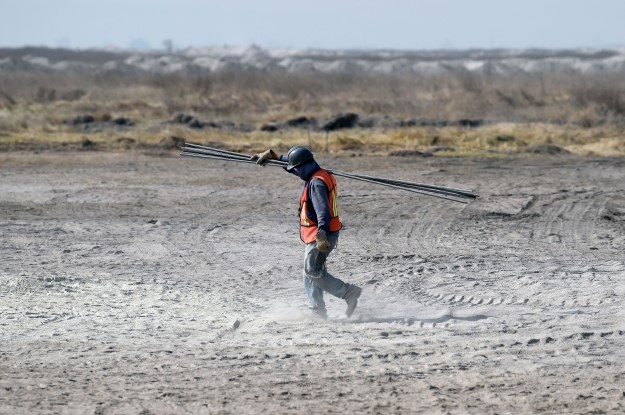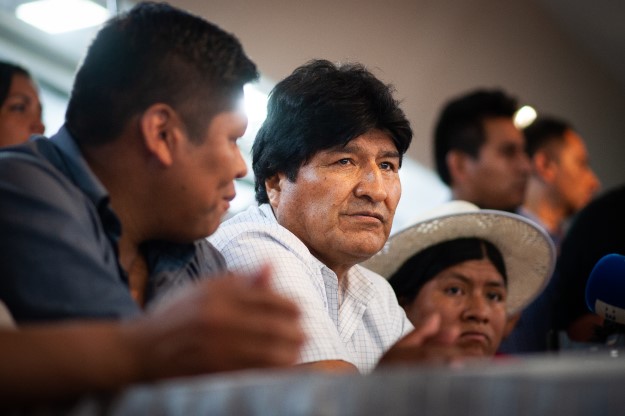LA PAZ – In 2019, Bolivia’s political institutions were put to the test. In the new year, it may be the economy’s turn.
Many are hoping elections slated for May will help quell the turmoil that erupted after last year’s disputed presidential election and subsequent resignation of President Evo Morales. If the country can regain political stability and consensus, the next government will have to quickly address an increasingly complicated economy – one strained by high deficits, low reserves and an overdependence on primary commodity exports.
Jeanine Áñez, the senator who replaced Morales as the country’s interim president in November, heads a caretaker government whose main mandate is to conduct new democratic elections smoothly. But in addition to this main goal, she also must ensure macroeconomic stability until the next administration takes office. And macroeconomic stability is a difficult challenge at a time when hydrocarbons output, Bolivia’s main export, is falling due to both a depletion of existing reserves and reduced purchases from its main buyers, Brazil and Argentina. The Bolivian economy is particularly vulnerable to exogenous shocks, and resilience must be built. However, the transitory nature of Áñez’s presidency is, in a way, a straitjacket: She doesn’t have the time or the mandate to undo the main reforms of Morales’ government, however necessary that may be toward weathering the coming storm.
Thus, the new government to be elected in May will quickly face very difficult decisions concerning the economy. From an overvalued exchange rate, to adjusting domestic prices of heavily subsidized fuels, the next administration will face several stumbling blocks. More broadly, Bolivia’s next president will have to take actions to narrow the fiscal deficit and to redress the external accounts.
At first, Morales’ economic legacy seems impressive. From 2006, the year he took office, through 2018, GDP growth averaged 4.9%, according to World Bank data. Annual inflation, meanwhile, averaged 5.5%. Accumulated international reserves reached $15 billion (or close to 50% of GDP) in 2014. As important, the percentage of people living in poverty declined from 59.6% in 2005 to 36.4% in 2017, and inequality measured by the Gini index fell from 58.5 to 44.0. Yet, despite these good numbers, Bolivia’s long-term development problems remain, or even worsened, and the country’s insertion into the international economy is still a distant reality.
To understand the complicated panorama facing the next government we have to look back at Morales’ first term, which began during the decade-long export boom that overlapped with his administration and influenced his non-conventional economic policies. (The long cycle of high export prices followed important findings of natural gas, privatizations and changes in the tax legislation done in the 1990s.) The windfall income that Bolivia received out of the improvements in its terms of trade amounted in some years to a huge 8% of GDP.
The export boom aided a fast increase in deposits in the banking system, which in turn contributed to a surge in financing of residential construction. Since construction is very labor-intensive, open unemployment dropped. The informal labor sector also expanded, though for different reasons. More than Morales’ own policies, high rates of economic growth helped improve social progress indicators.
Behind the positive trend, however, a number of issues persisted, which may have kept the Bolivian economy from doing even better than it did. Namely, there was little diversification of exports and production under Morales. In fact, exports became more concentrated than ever in hydrocarbons, metals and grains. Worse, the spike in income was not invested at all in institutional strengthening. On the contrary, crucial institutions like checks and balances, rule of law and the independence of the central bank were severely impaired. Property rights were weakened and the private sector was treated with extreme ambiguity.
Despite Morales’ anti-market policies, which included nationalizations and a significant expansion of state-owned enterprises, he executed his policies with some caution, which helped Bolivia avoid the kind of pain experienced by its neighbors when the commodities boom ended in 2014. Still, the country’s loss of export income was as high as 40% in 2015. In the subsequent years the situation improved modestly. Morales tried to prolong the effects of the export bonanza by pushing public investment, driving up the fiscal deficit, which has been close to 7.5% of GDP since 2015. The deficit in the current account of the balance-of-payments in the same period was also very large, at over 5% of GDP on average. These twin deficits have been financed by depleting Bolivia’s international reserves, which in October 2019 was at half of its peak value reached in 2014, and by some modest increase in external debt.
Notwithstanding the difficulties mentioned above, a reasonable rate of GDP growth, above the Latin American average, can still be attained in 2020. It will require the private sector responding strongly to an expected improvement in business climate. With less policy constraints on private sector initiatives and investment, the Bolivian economy can grow, become diversified and ensure equity. But first, the reestablishment of confidence is crucial. This depends very much on the handling of the transition by Áñez and whoever Bolivians entrust to lead the country come May.
—
Morales was the president of Bolivia’s central bank from 1996 to 2006. He is currently a professor of economics at the Catholic University of Bolivia.








